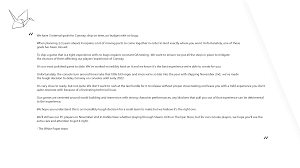The term “white paper” has a long history dating back to WWII. It was also used in science and medicine during the 1950s, and was popular in the IT industry until the 1980s. It was not until the development of the web that white papers became a household word. In 2002, a Google search for “white paper” returned 2.8 million hits. Nonetheless, there is much more to the term than that.
Case studies are a summary of the entire paper
A case study is a concise description of a specific problem or success that your company has achieved. It highlights the relationship between your company and your customers. It should be less than two pages, but it should still provide details on how your solution helped the company. For example, if you’re writing about an implementation of a software solution, your case study should explain how the process worked and how the company was able to implement it successfully.
A case study is a short, concise summary of the entire white paper. Case studies are a great way to showcase your solutions to real-world problems. You can also write a case study based on the benefits of your product, service, or solution. These types of white papers are not for everyone. Because they require a high level of analytical thinking, they’re not for everyone. Although some content writers are skilled in writing white papers, not all people have the expertise to produce a quality case study.
Contents of a white paper should showcase your expertise
The content of a white paper should demonstrate your knowledge of a certain topic or industry. It is important to include relevant statistics and examples to back up your claims and make your paper more credible. After drafting the white paper, the copywriter should pass it to a fact-checker to ensure the content has accurate statistics. Lastly, a proofreader should check the content for typos and spelling errors. The editor will also be responsible for ensuring that the content meets the guidelines and is free of errors.
When creating a white paper, you need to focus on the audience’s problem and your solution. Then, you need to research, cite sources, and present your conclusions and recommendations. Remember that your audience does not want to read a 50-page document. Instead, focus on providing valuable information and not sounding salesy. Your content must be engaging for your audience and should showcase your expertise in the topic. A good white paper should be at least six pages long. But if you do your research and do the research yourself, you can also use longer ones.
Examples of white papers
There are a variety of ways to write a white paper, and some of the most effective are those aimed at business-to-business marketing. These are typically designed to inform and convince other businesses about the benefits of a product or service. They may include numbered lists that highlight specific features of the product or service, or they may simply introduce a better solution to a common challenge. Regardless of your purpose, the key is to make your white paper easy to read and understand.
A white paper is typically long and aimed at decision makers and experts. Every good white paper begins with a thorough research process. It should contain content compiled from authoritative sources and industry experts. In addition, it should be unbiased and objective. It should also be concise and easily digestible. A few simple steps can help you craft an effective and informative white paper. To get started, check out the following examples of white papers and use these as guides.
Formats of white papers
There are three basic types of white papers. Each one is effective for delivering information at a specific point in the customer journey. This type of document is designed to present a particular point of view, but does not necessarily promote a product or service for the sake of direct sales. While some white papers are published in trade magazines, others are published in conference proceedings or are cited in other literature. While there is no set format or style for white papers, there are some common characteristics that make them effective.
White papers should be relevant and unbiased. They should be able to address a real problem that your potential customers face. The length of a white paper does not need to be very long, but it should be at least 3,000 words. The white paper should also be free of fluff. However, it is advisable not to use any information or data that may not be helpful to your audience. You can use statistics and data to illustrate your point.
Typical length of a white paper
While the typical length of a white paper is anywhere from six to ten pages, there is a sweet spot between these two numbers. White papers should have enough content to educate readers and collect leads, but they should also be brief enough to not be overwhelming. They should also have a strong foundation of research and data to back up your solutions. Regardless of the length, it is important to consider your audience’s time. Keep in mind that your goal is to provide your audience with a solution or expertise, not to bombard them with data and facts.
When determining the length of your white paper, the first step is to understand your audience. Remember that your audience is your target audience. They want to find valuable information that will help them make an informed decision. For this reason, you should write a brief, executive summary at the beginning of the paper. A one-page executive summary should be no longer than a few paragraphs. The executive summary is a critical part of your white paper because it will set the tone for the rest of the document. Make sure to organize your white paper with subheadings and bullet points to simplify the reading experience.

